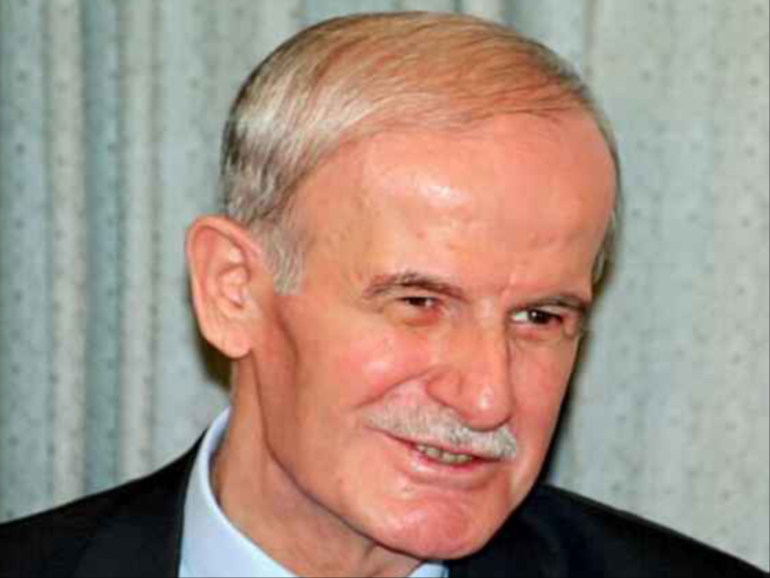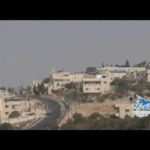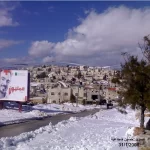A massacre that took place in the Palmyra desert prison, committed by the Syrian regime in retaliation against the Muslim Brotherhood following the attempt to assassinate former Syrian President Hafez al-Assad. The massacre was carried out by the Defense Brigades led by Rifaat al-Assad on June 27, 1980 within three hours, killing about 1,200 detainees according to human rights estimates, and burying the bodies in a desert valley.

Before the massacre
Several human rights sources confirm that the day before the massacre, former Syrian President Hafez al-Assad was subjected to an assassination attempt, on June 26, 1980, when he was bidding farewell to his Nigerian counterpart, Hussein Konchi, at the door of the guest palace in the Abu Roumaneh neighborhood of the capital, Damascus.
One of Hafez al-Assad’s bodyguards tried to assassinate him when he threw two grenades and shot him, but another bodyguard named Khaled al-Hussein rushed to protect him and sacrificed himself, and Assad survived the assassination and was lightly wounded.
The Syrian authorities accused the Muslim Brotherhood of planning and carrying out the assassination attempt, and Hafez al-Assad and his brother Rifaat al-Assad retaliated for the Palmyra massacre.
Rifaat al-Assad confirmed this in a television interview when he said: “The Palmyra incident came in the wake of the Muslim Brotherhood’s assassination of Syrian President Hafez al-Assad. The Muslim Brotherhood assassinated him and beat him with bombs,” he said, as he promised – in the same interview – that the injury was an assassination.
The massacre
The same day, orders were issued to liquidate detainees in Palmyra Desert Prison, an old prison located in the Homs desert, 200 kilometers from Damascus, built in the thirties of the 20th century and used by the regime to arrest and torture prisoners of conscience, dissidents, and politicians.
The task was entrusted to the Defense Brigades, which was led by Rifaat al-Assad, and his brother-in-law, Major Mu’in Nassif, was assigned to liquidate the detainees, so he went with 100 members of the Defense Brigades to Palmyra prison with 12 helicopters, of whom about 80 entered the cells.
Khaled al-Aqla, a survivor of the Palmyra prison massacre, recounts the details of that day: “We used to have the time to check and change the guards at two o’clock in the afternoon every day, but on Friday, June 27, 1980, they checked at eight in the morning, and asked for the names of the old detainees in the prison.”
Before nine, prisoners heard unprecedented movement in the prison, and the sounds of a large number of military boots moving around the cells and preparing their weapons, which was unusual.
At nine o’clock in the morning, the prisoners heard a grenade explosion, followed by the sound of continuous gunfire that lasted about 40 minutes or a little more, according to Khaled Al-Aqla’s description, then intermittent shooting continued until 12 noon, accompanied by cutting off electricity and water from all dormitories.
Khaled confirms that the shooting at the dormitories was at the same time, and that the initial firing of the bomb was the signal to start killing, and that their dormitory No. 17 – which had 26 detainees – was the only dormitory that the Defense Brigades did not enter, and no one died, and they did not know that they were the only ones who remained alive from the prison detainees.
At 12 noon, the shooting stopped completely, and 10 minutes later 8 helicopters flew to leave the place, and Al-Aqla confirms that the massacre was committed by the soldiers of the Defense Brigades.
Al-Aqla then describes the scene by saying that blood had gathered in a small pond in the middle of the prison yard, and that they could see the scene from a small crack in the door.
He continues: “10 minutes after sunset, they brought a group of punished soldiers, and they were about 100 soldiers from another prison and lit one light in the courtyard, and the soldiers began to transfer the bodies from the dormitories to the courtyard, and there sat one of the officers with a long iron rod in his hand, and the bodies were placed in front of him and stitched in it to make sure that they were dead and then the body was transferred to the military vehicle.”
“They saw these scenes from the window overlooking the courtyard because the dormitory was dark and the lighting was outside, so they could see what happened,” he said.
According to his testimony, the bodies continued to be transported by 3 military vehicles, the last of which moved after sunrise the next day, and during this operation the soldiers found among the bodies about 10 wounded, killing them all the morning after the massacre by firing squad.
Human Rights Watch describes the massacre, saying that “units of the Defense Brigades commandos led by Rifaat al-Assad killed about a thousand prisons, most of them Islamists, in retaliation for a failed assassination attempt on the Syrian president.”
The elements who participated in the massacre and later testified confirmed that the duration of the massacre was half an hour, and that they ordered the liquidation of everyone in the dormitories with gunfire and grenades.
Burial of bodies
Some of the former detainees who survived confirmed that the bodies of those killed in the massacre were buried in an area called “Wadi Oweida”, a place several kilometers from Palmyra prison, and the jailers used to bury the bodies of those killed in Palmyra prison in this valley.
In 2001,an Amnesty International report confirmed that the bodies of detainees were buried in large mass graves outside the prison.
After the massacre
Khaled al-Aqla recounts what happened the next day, saying that they “brought people to clean the prison and dormitories, and others to repair the holes and cracks caused by the shooting on the day of the massacre.”
The dormitory that survived the death remained without food or water for two days, according to Khaled’s description, and on the third day he brought them food and water, but none of them could eat because of what they saw and lived.
Al-Aqla asserts that after the prison reform, batches of detainees began to arrive day and night continuously, and that all those who came to prison were members of the Muslim Brotherhood.
Results
There is no accurate statistics on the number of dead and victims, and their names have not been announced, but a report issued by Human Rights Watch indicates that the death toll is estimated at a thousand unarmed detainees, the majority of whom are Islamists.
Syrian expert Michel Sorat pointed out in his book “The Barbaric State” that an analysis conducted by the Syrian security services showed that the death toll reached 1,181 victims.
Several international reports indicated that the number is more than a thousand detainees, while human rights sources confirmed that the number reaches 1,200.
As for al-Aqla and some of his colleagues who witnessed the massacre, they estimate that the Defense Brigades killed between 1,000 and 1,500 detainees on that day.
As for those who carried out the massacre, one of them was killed; one of the detainees was able to attack him, draw out his rifle and shoot him before killing the rest of the elements, according to the testimony of the soldier, who was arrested by the Jordanian authorities a year after the massacre.
News leak and international claims
Despite the extreme secrecy that the Syrian authorities surrounded the massacre and ways to get rid of the victims, the news leaked internationally a year later after the Hashemite Kingdom of Jordan arrested two Syrian soldiers who were part of a group accused of planning to assassinate the Prime Minister of Jordan at the time.
During their interrogation, they spoke of their participation in the Palmyra prison massacre. Amnesty International then called on the Syrian authorities to investigate the massacre, its details and perpetrators, but the Syrian government did not respond to the demands.
Some Syrian human rights websites have published testimonies of members who participated in the massacre in which they talked about the mission they were assigned to, and some estimated the death toll at 500.
The UN Human Rights Committee said the massacre “goes beyond the crimes of premeditated murder punishable under Syrian law” and held criminally responsible all those who ordered, contributed to and carried out the massacre.
The Syrian Human Rights Committee called on the Syrian government to announce the names of the victims, the place of burial of the bodies, and the names of those charged with carrying out the massacre and hold them judicially accountable, but to no avail.


